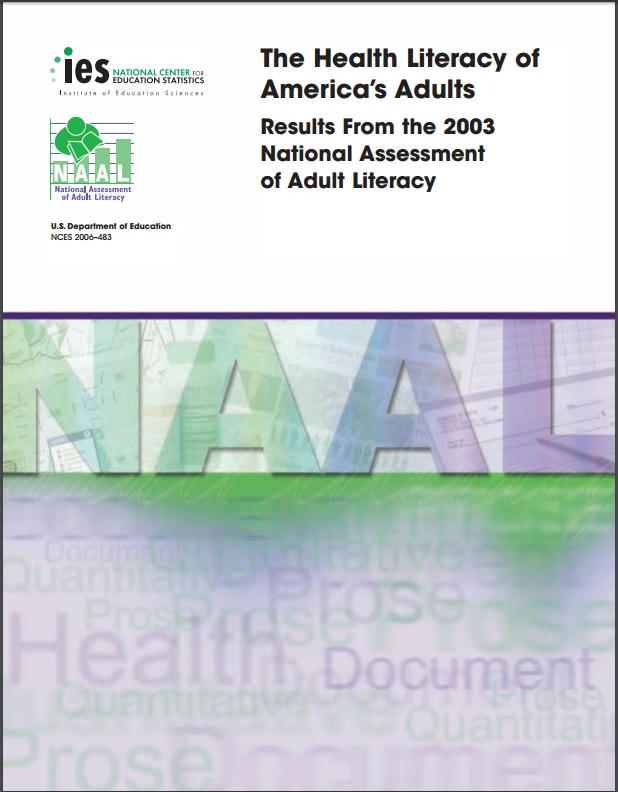

 Health Literacy: Improving Health, Health Systems, and Health Policy Around the World: Workshop Summary by
Health Literacy: Improving Health, Health Systems, and Health Policy Around the World: Workshop Summary by  America's Health Literacy: Why We Need Accessible Health Information by
America's Health Literacy: Why We Need Accessible Health Information by  Health Literacy to Promote Quality of Care by
Health Literacy to Promote Quality of Care by  The Health Literacy of America's Adults: Results from the 2003 National Assessment of Adult Literacy by
The Health Literacy of America's Adults: Results from the 2003 National Assessment of Adult Literacy by  Health Literacy Interventions and Outcomes: An Updated Systematic Review by
Health Literacy Interventions and Outcomes: An Updated Systematic Review by  Improving Patient Safety Through Informed Consent for Patients with Limited Health Literacy: An Implementation Report by
Improving Patient Safety Through Informed Consent for Patients with Limited Health Literacy: An Implementation Report by  Literacy and Health in America by
Literacy and Health in America by  National Action Plan to Improve Health Literacy by
National Action Plan to Improve Health Literacy by  Ten Attributes of Health Literate Health Care Organizations by
Ten Attributes of Health Literate Health Care Organizations by  “What Did the Doctor Say?:” Improving Health Literacy to Protect Patient Safety by
“What Did the Doctor Say?:” Improving Health Literacy to Protect Patient Safety by